Rohingya emergency
Over half a million Rohingya refugees have fled violence in Myanmar. Follow the crisis here.
The Rohingya are a stateless Muslim minority in Myanmar. The latest exodus began on 25 August 2017, when violence broke out in Myanmar’s Rakhine State. The vast majority of Rohingya refugees reaching Bangladesh are women and children, including newborn babies. Many others are elderly people requiring additional aid and protection. They have nothing and need everything.
Over half of the new arrivals have sought shelter in and around the existing refugee camps of Kutupalong and Nayapara and in makeshift sites that existed before the influx. Some have joined relatives there, while others are drawn to the assistance and services – putting immense pressure on the existing facilities.
“They burnt our house and drove us out by shooting. We walked for three days through the jungle.”
–Mohammed, who fled to Bangladesh with his family of seven, including a baby born along the way
New spontaneous settlements have sprouted overnight, raising concerns over the lack of adequate shelter, water and sanitation. Infrastructure and services are overstretched. Local villages have also taken in the new arrivals, straining their already limited resources.
The situation remains precarious as refugees continue to arrive every day. Many refugees tell horrific stories of extreme violence, several showing wounds and trauma inflicted before their flight. As more refugees arrive every day there is an acute need for emergency shelters, blankets and other forms of aid. To lessen the risk of waterborne and airborne diseases, refugees and host communities urgently need more clean water, health care and other supplies. Pregnant women, young children and the elderly are especially vulnerable.
What is UNHCR doing to help?
This is the fastest-growing refugee emergency in the world today. We are working with the Bangladesh government and partners to respond to the massive humanitarian needs.
Since August 25, UNHCR has airlifted 1,500 metric tons of emergency life-saving aid to Bangladesh – including blankets, plastic sheets, sleeping mats, family tents, plastic rolls, kitchen sets, jerry cans and buckets collectively valued at US$7.8 million – to assist 250,000 refugees. More aid is being moved by sea.
Together with our partners, we are also helping the government to develop Kutupalong Extension, a new site near Kutupalong refugee camp. This includes funding a road to facilitate construction and refugee access, supporting site planning, building latrines and wells, improving the water and sanitation facilities and distributing shelter materials.
As a measure against health problems such as acute watery diarrhoea, we are in the process of constructing a total of 8,000 latrines for the refugees. Already, UNHCR and partners have installed nearly 500 latrines, 51 shallow tube wells and 8 deep tube wells to ensure access to drinkable water.
Together with the Bangladesh’s Refugee Relief and Repatriation Commission, we are conducting family counting in the Kutupalong and Balukhali extension sites. The data collected on family profiles and vulnerabilities will help to improve aid delivery and plan for solutions in the future.
Led by UNHCR, the protection group is scaling up its engagement in all refugee settlements. The group is working on a referral system and safe spaces for victims of gender-based violence. It is also enhancing efforts to identify and refer children at risk for the appropriate support.
Our teams remain on full alert amid reports of a potential new influx of refugees by land and sea. UNHCR and its partners are supporting the government in pre-positioning and delivering assistance for potential fresh arrivals.
UNHCR continues to boost its presence in the field through the deployment of relief specialists in different sectors. We now have 182 emergency staff in Bangladesh, including 84 national colleagues. We will continue to boost our presence and operations as to match the scale and complexity of this still fluid and evolving refugee crisis.
UNHCR urgently requires an $83.7 million to respond to massive humanitarian needs in Bangladesh until the end of February 2018. Much more needs to be done to meet the acute needs of children, women and men fleeing conflict.
Reports and links
- UNHCR's Emergency Response in Bangladesh (September 2017)
- Supplementary Appeal – Myanmar Refugee Emergency Response In Bangladesh (Sept 2017 – Feb 2018)
- Bangladesh – Operational Update (26 November 2017)
Rohingya refugees seeking safety in Bangladesh
18 September 2017
-
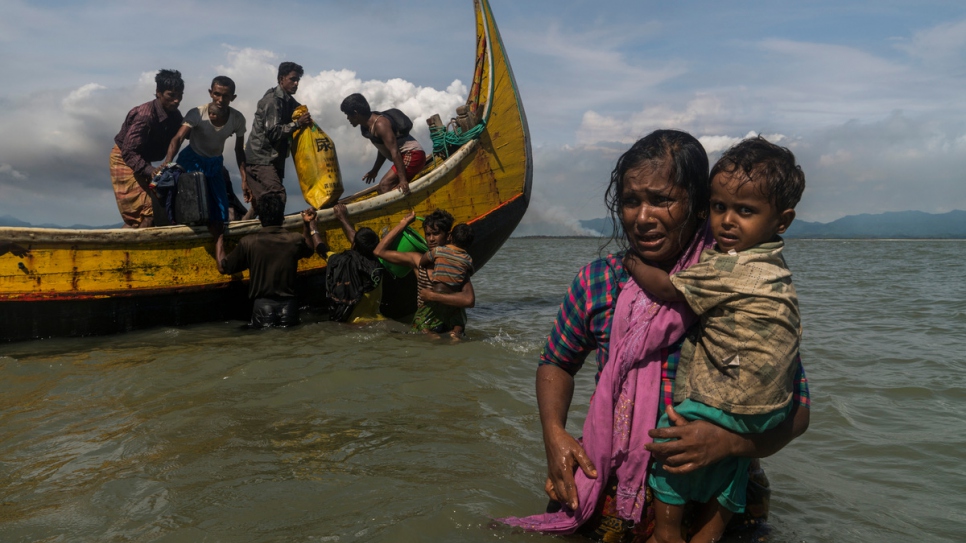 A mother carrying her child wades towards the beach at Dakhinpara, Bangladesh. © UNHCR/Adam Dean
A mother carrying her child wades towards the beach at Dakhinpara, Bangladesh. © UNHCR/Adam Dean -
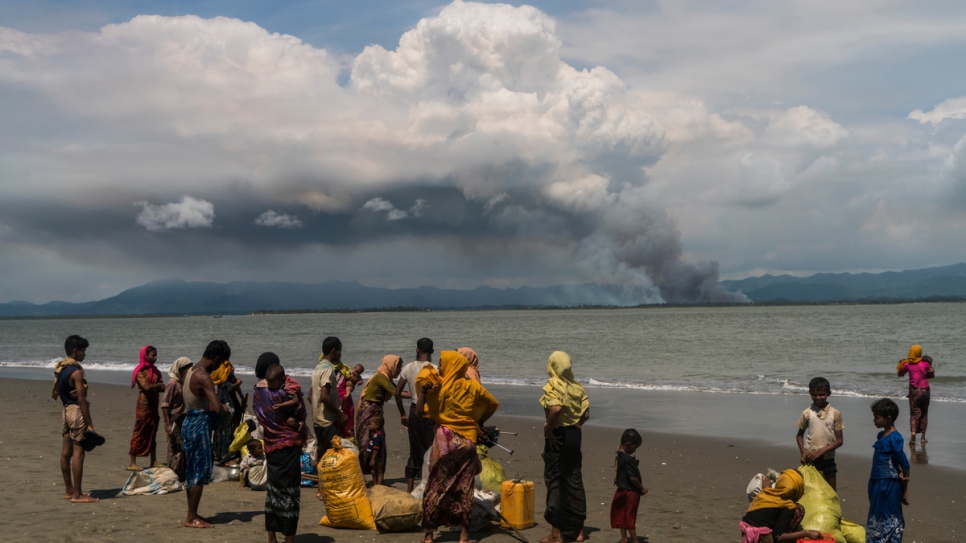 Rohingya families gather on the beach at Dakhinpara, Bangladesh, after crossing the sea on fishing boats from Myanmar. © UNHCR/Adam Dean
Rohingya families gather on the beach at Dakhinpara, Bangladesh, after crossing the sea on fishing boats from Myanmar. © UNHCR/Adam Dean -
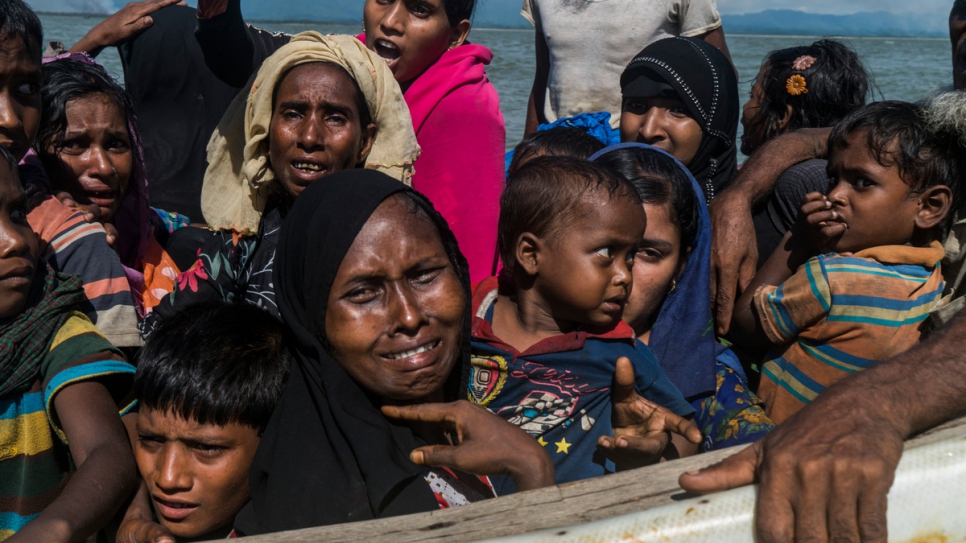 Rohingya women and children huddled on a fishing boat approach the beach at Dakhinpara, Bangladesh. © UNHCR/Adam Dean
Rohingya women and children huddled on a fishing boat approach the beach at Dakhinpara, Bangladesh. © UNHCR/Adam Dean -
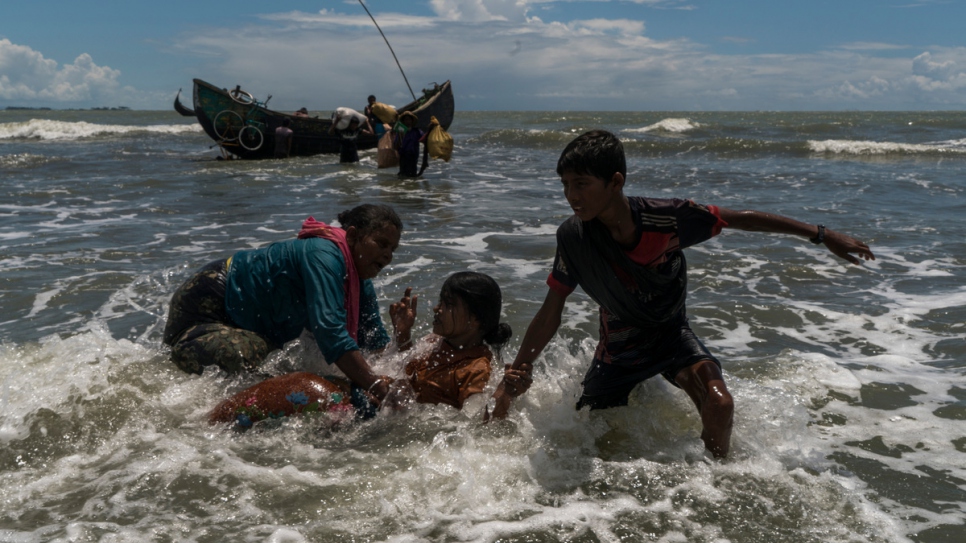 Rohingya refugees scramble off a fishing boat as it nears the beach at Dakhinpara, Bangladesh. © UNHCR/Adam Dean
Rohingya refugees scramble off a fishing boat as it nears the beach at Dakhinpara, Bangladesh. © UNHCR/Adam Dean -
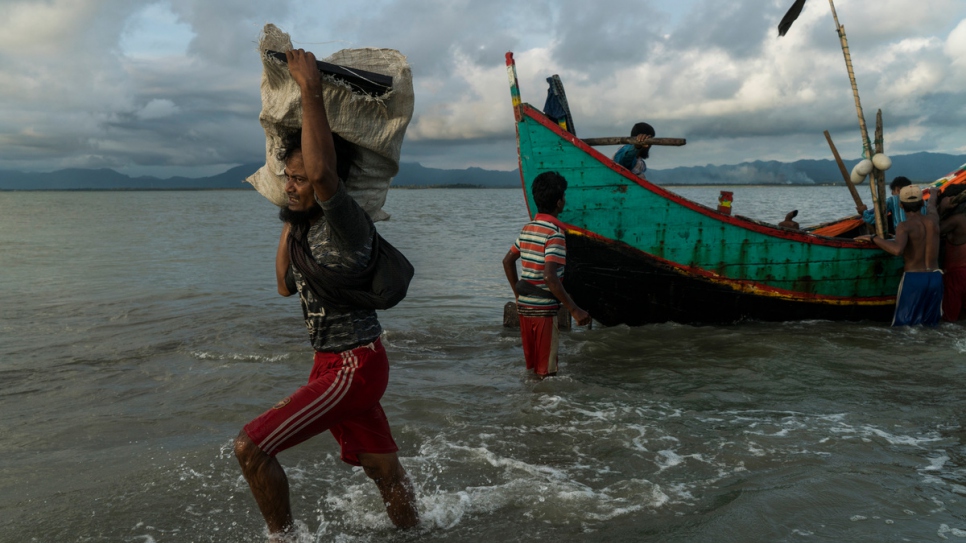 A Rohingya man carries a package towards the beach at Dakhinpara, Bangladesh. © UNHCR/Adam Dean
A Rohingya man carries a package towards the beach at Dakhinpara, Bangladesh. © UNHCR/Adam Dean -
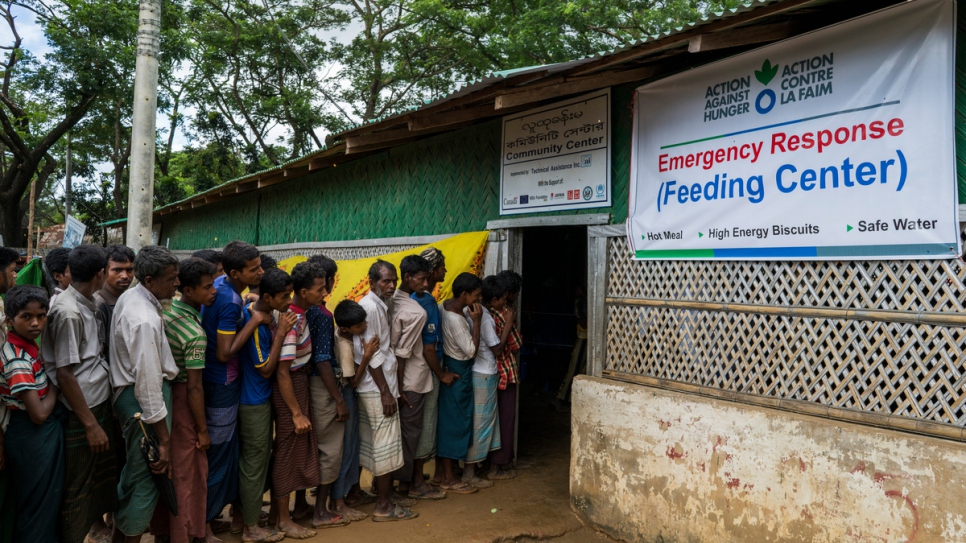 Newly arrived Rohingya refugees queue up for a cooked meal at Kutupalong refugee camp in Bangladesh. © UNHCR/Adam Dean
Newly arrived Rohingya refugees queue up for a cooked meal at Kutupalong refugee camp in Bangladesh. © UNHCR/Adam Dean -
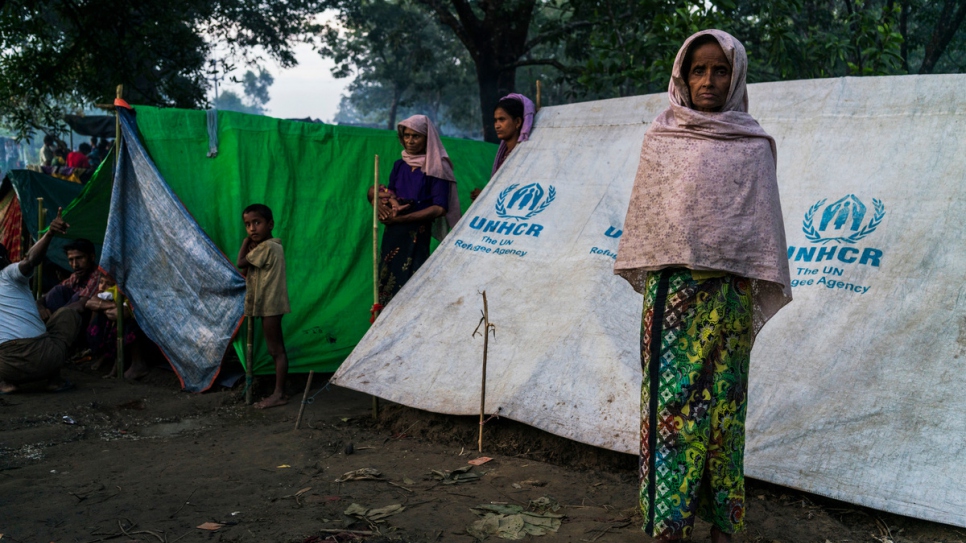 After fleeing violence in Myanmar, a Rohingya woman stands outside her tent at an informal settlement for new arrivals, near Kutupalong camp in Bangladesh. © UNHCR/Adam Dean
After fleeing violence in Myanmar, a Rohingya woman stands outside her tent at an informal settlement for new arrivals, near Kutupalong camp in Bangladesh. © UNHCR/Adam Dean -
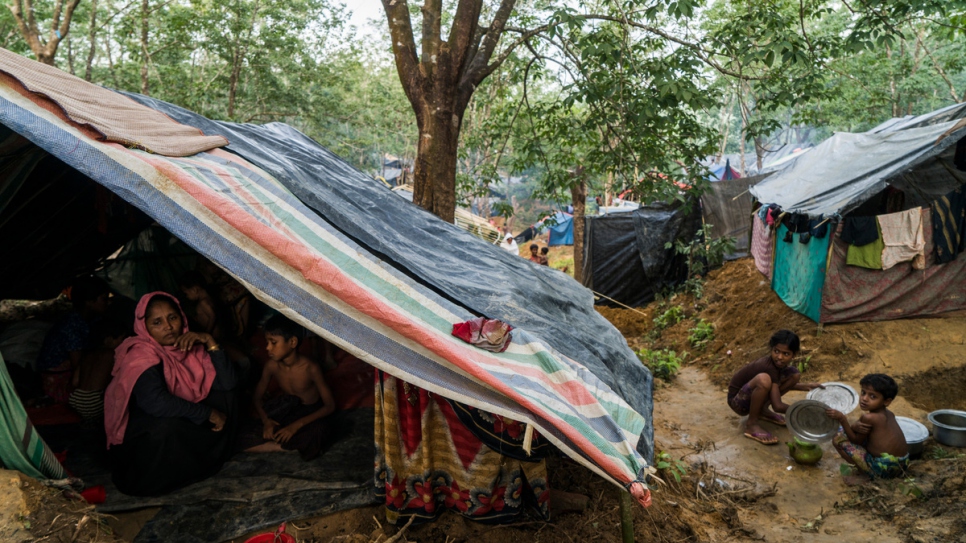 Rohingya refugees from Myanmar shelter under tarpaulin sheets in muddy conditions at an informal settlement for new arrivals, near Kutupalong camp in Bangladesh. © UNHCR/Adam Dean
Rohingya refugees from Myanmar shelter under tarpaulin sheets in muddy conditions at an informal settlement for new arrivals, near Kutupalong camp in Bangladesh. © UNHCR/Adam Dean -
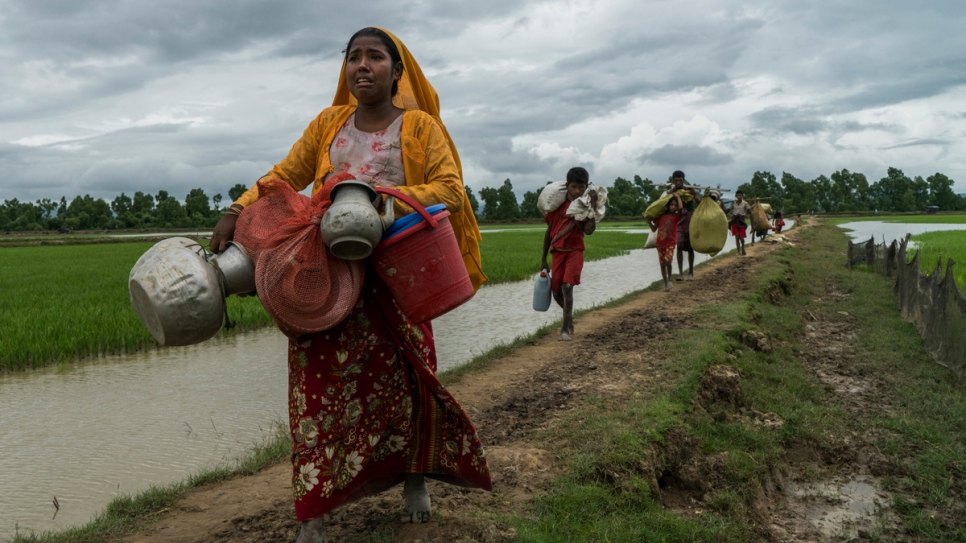 Senwara, a Rohingya refugee, cries as she arrives in Whaikhyang, Bangladesh, after walking two days from Myanmar with her father and son. © UNHCR/Adam Dean
Senwara, a Rohingya refugee, cries as she arrives in Whaikhyang, Bangladesh, after walking two days from Myanmar with her father and son. © UNHCR/Adam Dean -
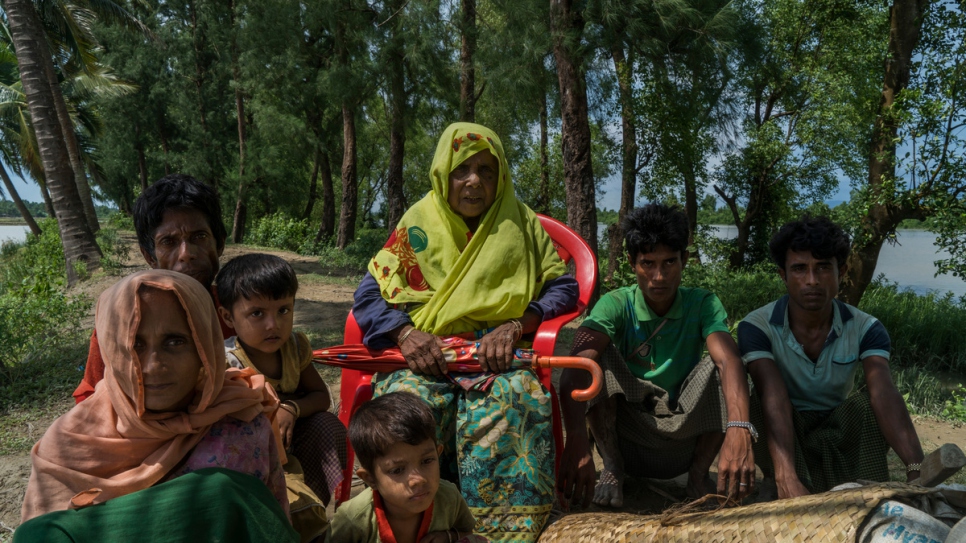 "I will never go back. They are burning the houses." Family members carried Mustafa, 80, in a chair from Myanmar to Whaikhyang, Bangladesh. They are Rohingya refugees from Mommistaung village in Maungdaw, where she says a massacre took place. © UNHCR/Adam Dean
"I will never go back. They are burning the houses." Family members carried Mustafa, 80, in a chair from Myanmar to Whaikhyang, Bangladesh. They are Rohingya refugees from Mommistaung village in Maungdaw, where she says a massacre took place. © UNHCR/Adam Dean -
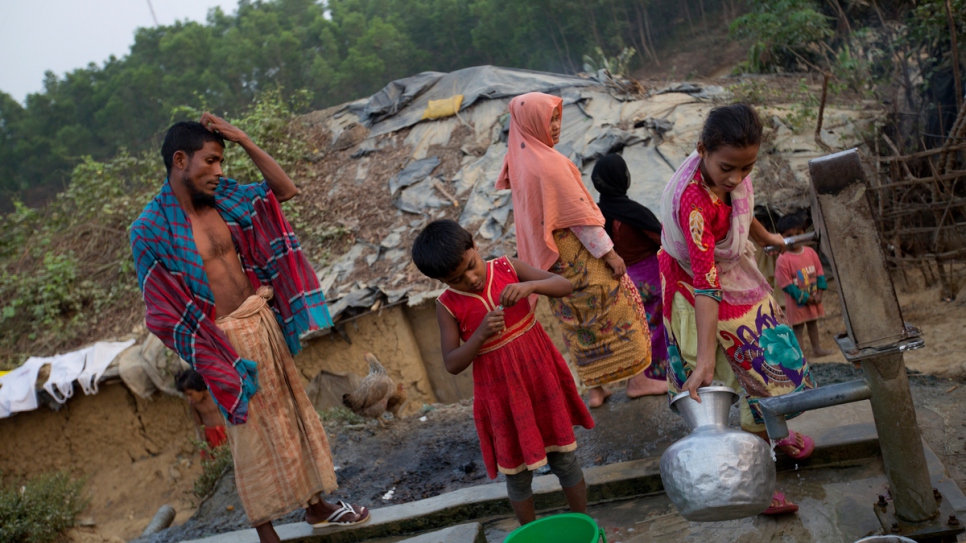 A recently arrived Rohingya family fill buckets with water from a well at a makeshift site in Cox's Bazar, Bangladesh, where tens of thousands of refugees have been living since an earlier outbreak of violence in Myanmar in October 2016. © UNHCR/Saiful Huq Omi
A recently arrived Rohingya family fill buckets with water from a well at a makeshift site in Cox's Bazar, Bangladesh, where tens of thousands of refugees have been living since an earlier outbreak of violence in Myanmar in October 2016. © UNHCR/Saiful Huq Omi -
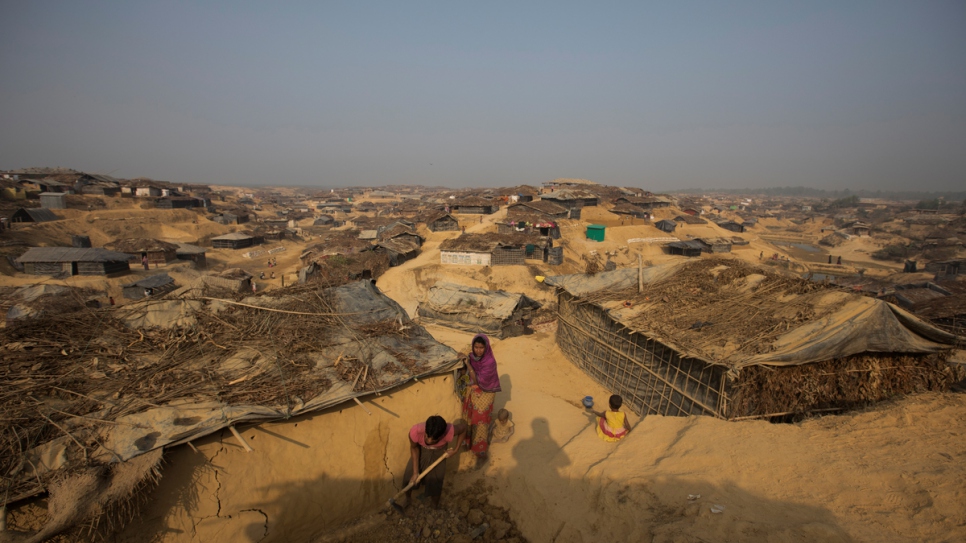 Newly arrived Rohingya families build new homes wherever they can in Cox's Bazar, Bangladesh, away from the overcrowded makeshift sites that have received tens of thousands since October 2016. © UNHCR/Saiful Huq Omi
Newly arrived Rohingya families build new homes wherever they can in Cox's Bazar, Bangladesh, away from the overcrowded makeshift sites that have received tens of thousands since October 2016. © UNHCR/Saiful Huq Omi -
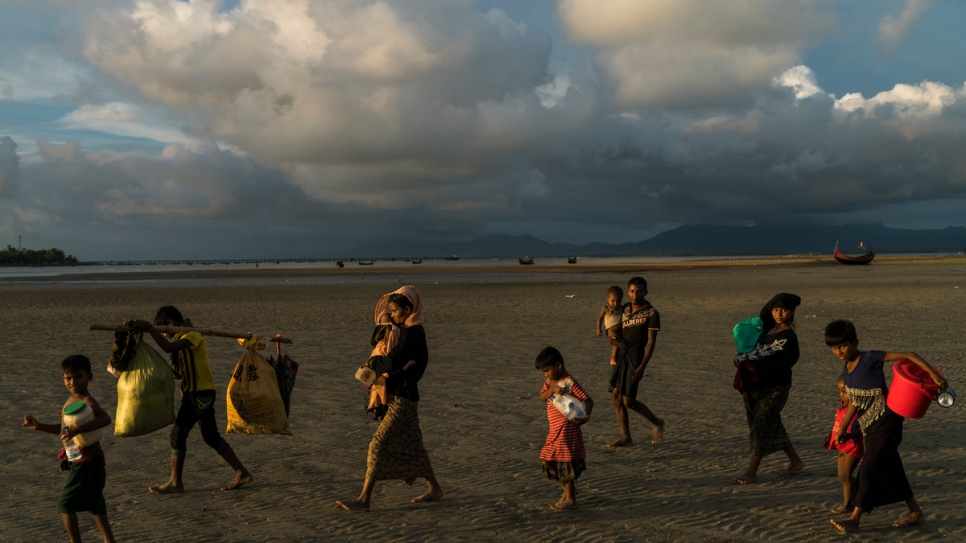 Rohingya families make their way across the beach at Dakhinpara, Bangladesh, after crossing the sea on fishing boats from Myanmar. © UNHCR/Adam Dean
Rohingya families make their way across the beach at Dakhinpara, Bangladesh, after crossing the sea on fishing boats from Myanmar. © UNHCR/Adam Dean -
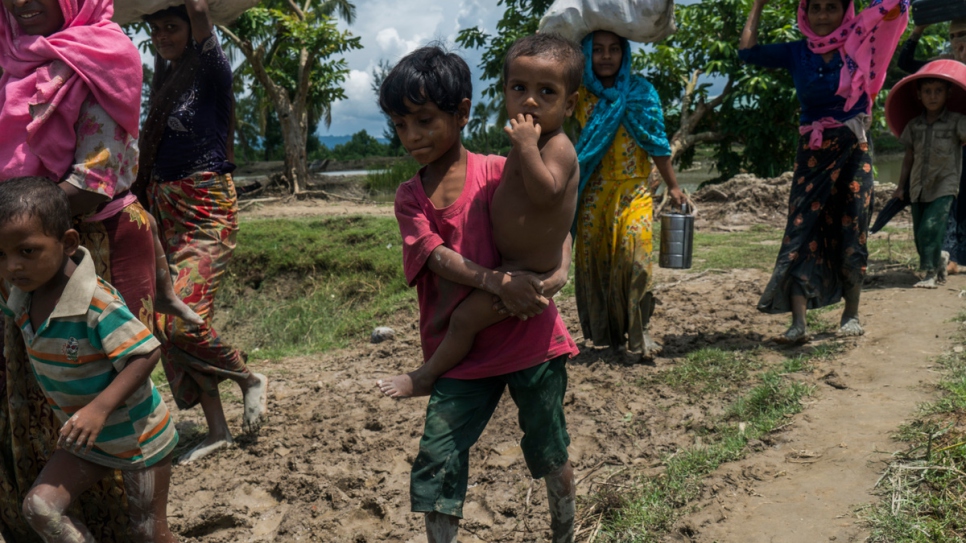 A Rohingya boy carries his little brother as he crosses with his family into Whaikhyang, Bangladesh. © UNHCR/Adam Dean
A Rohingya boy carries his little brother as he crosses with his family into Whaikhyang, Bangladesh. © UNHCR/Adam Dean -
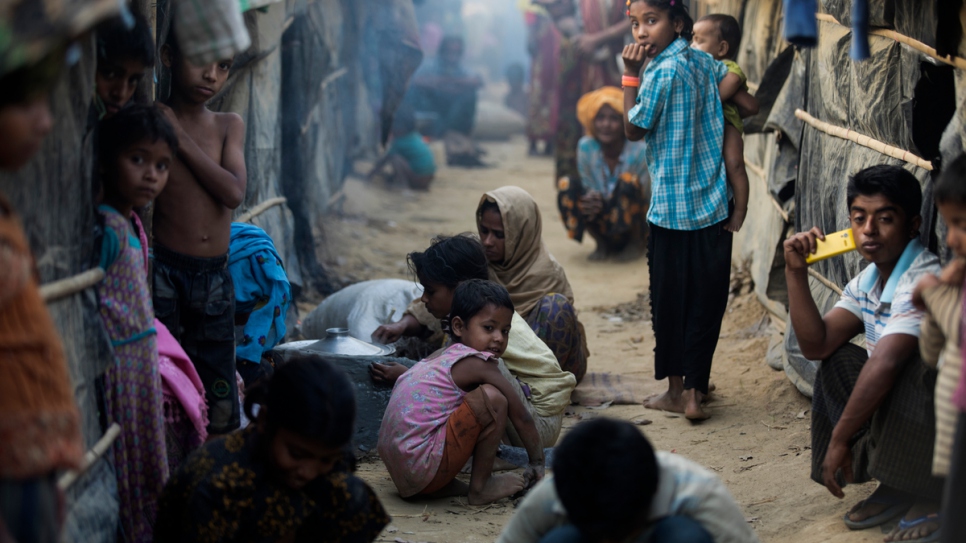 Many Rohingya refugees who fled the October 2016 violence in Myanmar live in overcrowded makeshift sites in Cox's Bazar, Bangladesh. © UNHCR/Saiful Huq Omi
Many Rohingya refugees who fled the October 2016 violence in Myanmar live in overcrowded makeshift sites in Cox's Bazar, Bangladesh. © UNHCR/Saiful Huq Omi
















